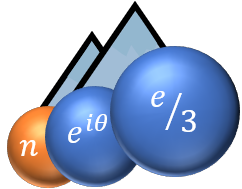The Hall effect originates from the motion of charged particles in a magnetic field and has deep consequences for the description and characterization of materials, far beyond the context of condensed matter physics. Understanding the Hall effect in interacting
systems still represents a fundamental challenge. Here [1] we directly observe the build-up of the Hall response in an interacting quantum system by exploiting controllable quench dynamics in an atomic quantum simulator, see Figure 1. By tracking the motion
of ultracold fermions in a two-leg ribbon threaded by an artificial magnetic field, we measure the Hall response as a function of synthetic tunnelling and atomic interactions. We unveil an interaction-independent universal behaviour above an interaction threshold, in clear agreement with theoretical analyses [2-3]. Our approach and findings open new directions for the quantum simulation of strongly correlated topological states of matter.
[1] T. Zhou, D. Tusi, L. Franchi, J. Parravicini, C. Repellin, S. Greschner, M. Inguscio, G. Cappellini, T. Giamarchi, M. Filippone, J. Catan and L. Fallani. Observation of Universal Hall Response in Strongly Interacting Fermions, arXiv:2205.13567, to appear in Science.
[2] S. Greschner, M. Filippone and T. Giamarchi, Universal Hall Response in Interacting Quantum Systems, Phys. Rev. Lett. 122, 083402 (2019).
[3] M. Filippone, C.-E. Bardyn. S. Greschner and T. Giamarchi, Vanishing Hall Response of Charged Fermions in a Transverse Magnetic Field, Phys. Rev. Lett. 123, 086803 (2019).
- Poster

 PDF version
PDF version

